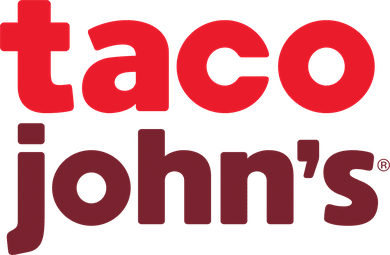By visiting our site, you agree to our privacy policy regarding cookies, tracking statistics, etc.
Taco John’s has been serving up bold flavors and fresh ingredients since its humble beginnings as a small taco stand in Cheyenne, Wyoming, in 1969. Brad Paxton and partner Matthew Keiser grew up eating the bold flavors and fresh ingredients at Taco John’s in the Midwest and felt passionate about joining the franchise. Together, they formed Paxton Keiser Enterprises, a Taco John’s franchisee network based in Nashville, Tennessee, that opened its first two stores in Kentucky in 2018.
As the franchisee quickly grew to 24 stores across Tennessee, Nebraska, Iowa, South Dakota, and Minnesota between 2020 and 2023, financial controller Anna Pool and chief operating officer Tina Braam knew they needed to scale their back-office resources beyond QuickBooks. They also knew they needed a system that could streamline core accounting functions like intercompany transactions—each of which previously required four separate journal entries to account for parent company transactions, reporting, and bank reconciliation.
When searching for a new solution, the leadership team evaluated platforms that could:
Recognizing the need for a more powerful and scalable solution, Paxton Keiser Enterprises turned to Restaurant365 to streamline accounting and drive profitability across all locations.
As we grew to the fourth largest franchisee in the brand, we knew that we could no longer succeed based on assumptions and needed hard data to make better decisions.
Anna Pool, Financial Controller
Paxton Keiser Enterprises, a Taco John’s Franchisee
After Paxton Keiser Enterprises chose Restaurant365 as its accounting solution, they got to work eliminating inefficiencies right away. Thanks to its extensive partner ecosystem, Restaurant365 integrated seamlessly with Taco John’s POS system. Restaurant365’s all-in-one cloud-based platform provided instant access to critical financial data, allowing managers and leadership to make informed decisions without relying on manual reports. With built-in cost-tracking and consolidated reporting, the team could now compare store performance effortlessly, control food costs, and drive profitability. By streamlining accounting processes, Restaurant365 empowered Paxton Keiser Enterprises to focus on growth and operational excellence.
In addition to the myriad, time-saving efficiencies Restaurant365 brought into Paxton Keiser’s back office, the integrated system quickly empowered the company’s home office and franchisees to easily share pricing details from all their distribution centers across all their locations. These speedy insights brought a 2.5% reduction in food costs within the first year, with expectations to save an additional 1.5% in the next year.
Being able to see, for example, that milk costs have increased means that we can have conversations that we could not in the past. We’ve probably saved two and a half percent on food cost. And we hope to save another percent and half at least this year on food cost because we’re able to share data.
Tina Braam, Chief Operating Officer
Paxton Keiser Enterprises, a Taco John’s Franchisee
In addition to cutting down on food costs, the automation of accounting tasks has drastically cut down manual work, saving countless hours each month on reporting, reconciliation, and intercompany transactions. Previously, reconciling financials across multiple locations could take up to 15 days per month. Now, the process is streamlined and nearly instantaneous. Managers and financial leaders can access consolidated reports at any time, reducing delays and allowing for more agile decision-making.
Better data transparency has also led to improved communication across all locations. With Paxton Keiser’s previous system, a simple request could take as much as a day of manual number crunching to fulfill, which often discouraged leaders from asking for the data needed to properly perform their job. By moving from a static to a dynamic system, the entire team can see what’s happening in every bucket, labor, food, and repair and maintenance in real time.
Finally, instant access to key metrics has increased accountability across all locations. The company bases general manager bonuses on key metrics like food cost but was previously unable to deliver ongoing performance figures to managers in a way they could act on to both improve store-level profits and secure incentives. Now, everyone has access to the information and a better understanding of how to take action in the middle of a period instead of trying to sort out what happened a month or more after it ends.
Paxton Keiser Enterprises transformed its financial operations after integrating Restaurant365 into its toolsuite. With real-time data, automated processes, and improved transparency, the franchisee is now more agile and efficient than ever. As they continue expanding, Paxton Keiser Enterprises is well-equipped to sustain growth and profitability—proving that the right technology can be a game-changer in the fast-paced restaurant industry.
Restaurant365 has been fantastic to work with. When I have questions, I just send in a ticket or use the chat channel, and somebody is right there to help me. That is better tech support than my other systems. We have many opportunities to continue improving our growing business with the support of Restaurant365 in the future.
Tina Braam, Chief Operating Officer
Paxton Keiser Enterprises, a Taco John’s Franchisee

2.5% reduction
in food costs
1.5% projected savings
in food costs over the next year
15-day reduction
in month-end reconciliation
Discover how you can start achieving savings like these for your business
Restaurant365 bridges the gap between accounting and operations by centralizing all data, helping restaurant operators to become more efficient, accurately forecast, and tackle any challenge or opportunity with speed and accuracy.